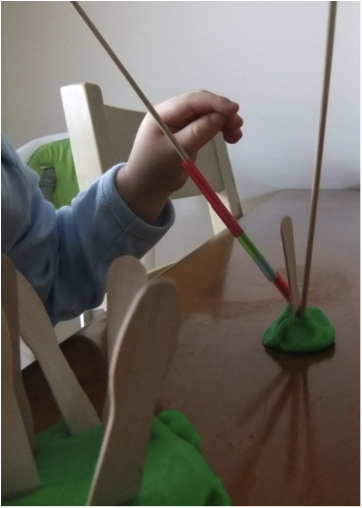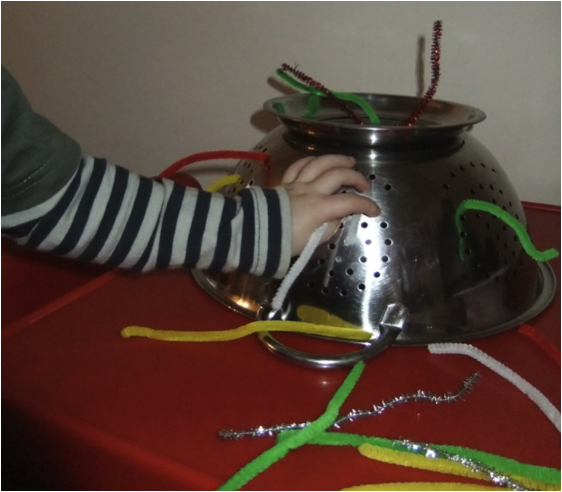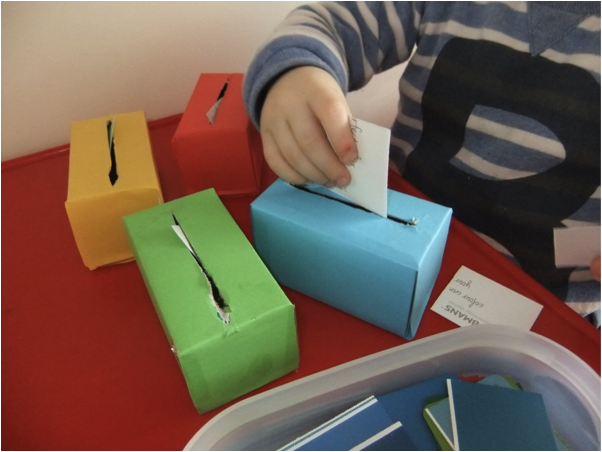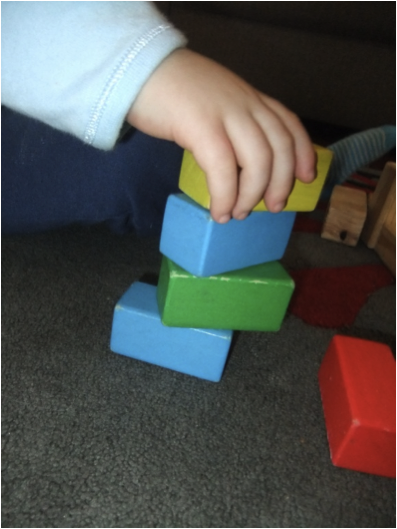By Janette from Explore and Learn Toddler
When you hear ‘fine motor skills’, you’re hearing about your child’s finger and hand muscles – the way children grasp, manipulate, stack, sort and develop hand-eye coordination. These skills are an important part of childhood development as they help children prepare for pre-school and school tasks such as writing, drawing, cutting and colouring.
Fred Donaldson, a specialist in the benefit of play in education, says “Children learn as they play. Most importantly, in play children learn how to learn.” As parents and our children’s first teachers, it’s part of our job to embrace our children’s play and ability to learn and build their fine motor skills.
Creative play, play that encourages children to poke, manipulate and explore, is the type of play we need to encourage for our children to build these important fine motor ‘finger muscles.’
Hand-Eye Coordination
This activity is a great one that can be pulled out without any fuss or mess – my favourite type! Toddlers love to poke things here and there and this activity embraces that love while working on their pincer grip (important for holding a pencil correctly) and building the strength in their finger muscles. The activity involves poking pipe cleaners (the non-fluffy ones) through the holes of a colander. Cutting the pipe cleaners in half can make them a little easier to manage and less frustrating. Depending on the age and persistence of your little one, the finished results are almost like Upsie-Daisy’s hair.
This activity is all about fine motor skills and colour recognition. The boxes are 4 light bulb boxes covered in coloured paper and the ‘mail’ is cut up colour swatches from the paint section at Bunnings. The idea behind this activity is that your little one ‘posts’ the colours into the right coloured box. An extension of this activity would be to write numbers on the cards and boxes and have your child match them. If your child is younger, but you think that they would love this activity, use only one large box with bigger hole for manipulation of the colour cards.
Manipulating

Other examples of manipulating include (but aren’t limited to) clay, paper, hammering, threading, cutting, screwing nuts and bolts, puppets and lacing.
Grasping
Building with wooden blocks helps to develop whole-hand grasping and hand-eye co-ordination, while the conversations that you have with your child while building also adds to their learning. When building with your child, you can talk about colours and count as the blocks go up, up, up in the tower. Building block activities also encourage social skills such as sharing and taking it in turns to build the tower together.
Other examples of grasping include puzzles, using a crayon or pencil (drawing, colouring, scribbling and writing), paint brush, glue stick, stacking, sorting, peg games and stringing.
Janette
Janette is a Primary School Teacher who loves to watch her two boys, Cian and Sam, and other children play and discover. Her business, Explore and Learn Toddler was born out of her passion for hands-on and real-life learning and aims to support families with helping their kids learn through play. Don’t forget to pop over and take a peek at their regular toddler and preschooler learning activities blog and awesome wooden toy range, as well as lots of other great resources, or check out her facebook page. To see all of Janette’s articles, click here.

















